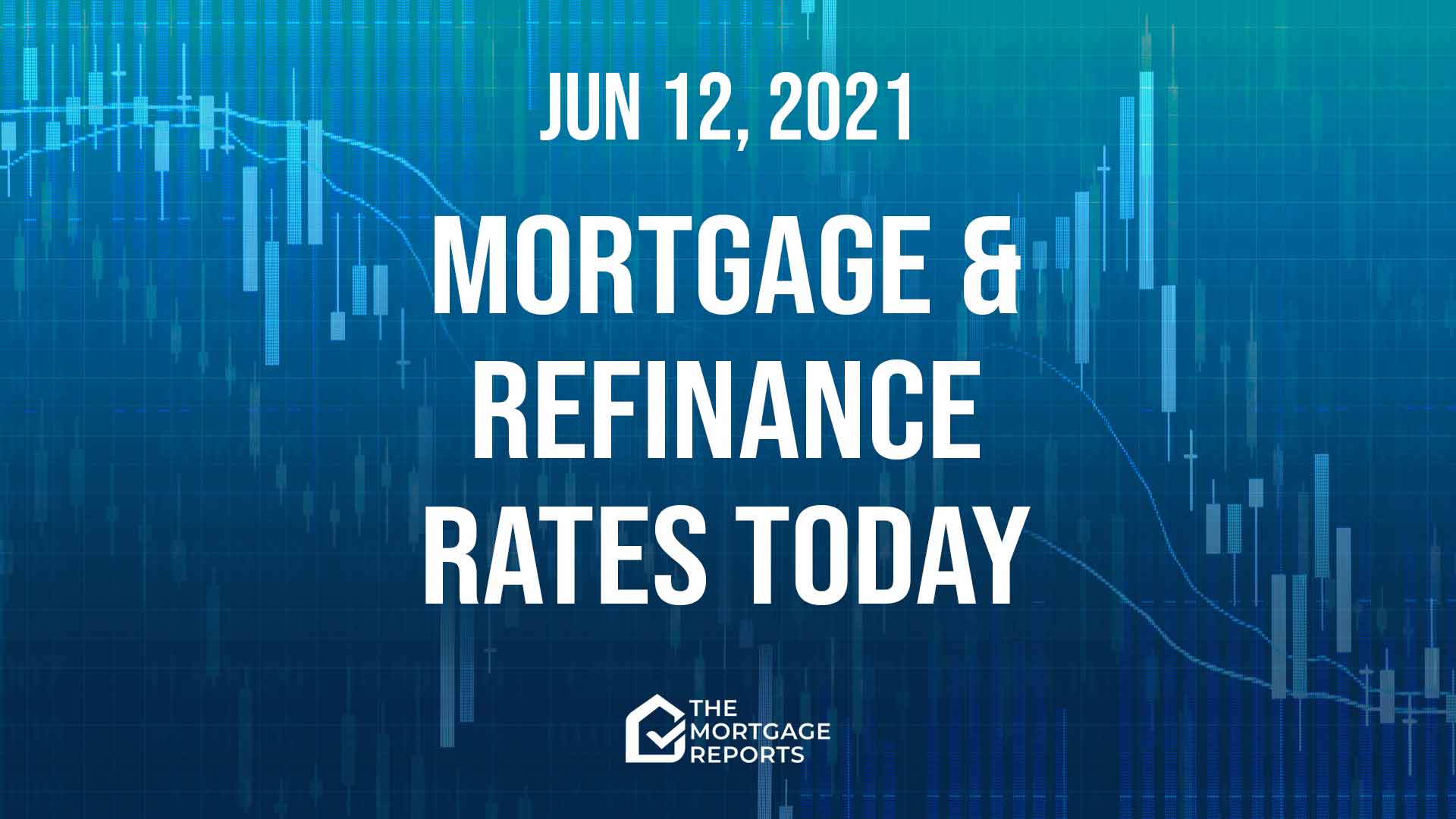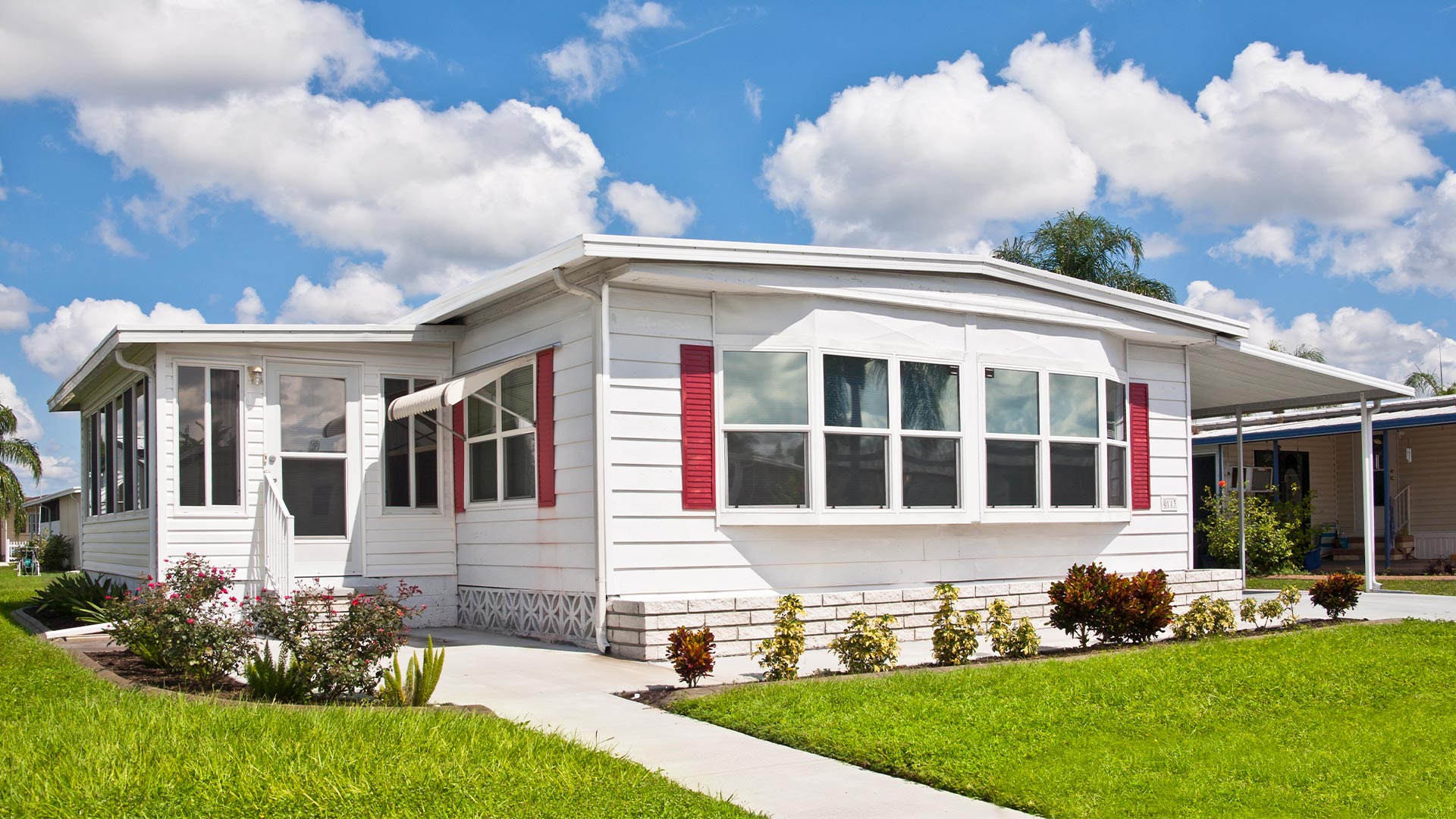
Today’s mortgage and refinance rates
Average mortgage rates fell yesterday, a possibility we predicted. But the drop was bigger than expected. And they’re now at their lowest level in more than a month.
My best guess is that mortgage rates might rise modestly next week. But they’re currently inherently unpredictable. So that really is a guess, based on nothing more than that rebounds are common after the sorts of falls we saw this week.
Find and lock a low rate (Jun 12th, 2021)Current mortgage and refinance rates
| Program | Mortgage Rate | APR* | Change |
|---|---|---|---|
| Conventional 30 year fixed | |||
| Conventional 30 year fixed | 2.811% | 2.811% | Unchanged |
| Conventional 15 year fixed | |||
| Conventional 15 year fixed | 2.125% | 2.125% | Unchanged |
| Conventional 20 year fixed | |||
| Conventional 20 year fixed | 2.625% | 2.625% | Unchanged |
| Conventional 10 year fixed | |||
| Conventional 10 year fixed | 1.945% | 1.978% | Unchanged |
| Conventional 5 year ARM | |||
| Conventional 5 year ARM | 3.532% | 3.191% | -0.03% |
| 30 year fixed FHA | |||
| 30 year fixed FHA | 2.688% | 3.343% | Unchanged |
| 15 year fixed FHA | |||
| 15 year fixed FHA | 2.404% | 3.003% | Unchanged |
| 5 year ARM FHA | |||
| 5 year ARM FHA | 2.5% | 3.194% | Unchanged |
| 30 year fixed VA | |||
| 30 year fixed VA | 2.255% | 2.426% | +0.01% |
| 15 year fixed VA | |||
| 15 year fixed VA | 2.25% | 2.571% | Unchanged |
| 5 year ARM VA | |||
| 5 year ARM VA | 2.5% | 2.372% | Unchanged |
| Rates are provided by our partner network, and may not reflect the market. Your rate might be different. Click here for a personalized rate quote. See our rate assumptions here. | |||
COVID-19 mortgage updates: Mortgage lenders are changing rates and rules due to COVID-19. To see the latest on how coronavirus could impact your home loan, click here.
Should you lock a mortgage rate today?
Despite this week being a relatively good one for mortgage rates, I’d still lock soon. Just not on a day when those rates look likely to fall.
Yes, this week’s movements widened the narrow range within which rates have been moving recently. But the rewards of floating are, in my view, still slim compared to the risks.
And that’s why my personal recommendations remain:
- LOCK if closing in 7 days
- LOCK if closing in 15 days
- LOCK if closing in 30 days
- LOCK if closing in 45 days
- LOCK if closing in 60 days
However, with so much uncertainty at the moment, your instincts could easily turn out to be as good as mine — or better. So be guided by your gut and your personal tolerance for risk.
What’s moving current mortgage rates
Last week, I was noting that markets hadn’t responded as normal to the employment situation report. And, this week, I have to report that the abnormality continued in their response to the consumer price index.
It seems that investors are still willing to accept the Federal Reserve’s analysis surrounding rising prices. The Fed thinks that those rises are transitory and won’t force it to hike its interest rates or taper its asset purchases earlier than planned.
If the Fed’s correct, that will be good news for mortgage borrowers. Because those asset purchases currently include $40 billion a month in mortgage-backed securities. And they’re keeping mortgage rates artificially low.
However, if the Fed is proved wrong, and it does have to taper its asset purchases early, that’s likely to create a spike in mortgage rates.
Fed cred
So it’s good that the Fed is remaining credible among investors. But the voices challenging its analyses are growing. Yesterday, The Washington Post explained:
Despite the highest inflation since the 2008 financial crisis, the Federal Reserve is continuing the easy-money approach it adopted last year to avert a pandemic depression. … But some notable critics warn that bubbling inflation could instead feed on itself, ultimately forcing the Fed to slam on the brakes by raising interest rates. That might cool rising prices but only at the cost of plunging the United States into a new recession and destabilizing the global economy by forcing many foreign investors and borrowers to absorb punishing losses.
— WaPo, “Rising prices in the U.S. could rattle other countries amid uneven global recovery,” (paywall) June 11, 2021
The last time the Fed tried to “slam on the brakes,” in 2013, mortgage rates shot up.
A bit of good news
But, in the last few days, the financial media have begun reporting a new phenomenon. And that could help to moderate any future rises in mortgage rates.
It seems that the weak dollar is attracting more foreign investors. Let’s see why.
Suppose you’re a UK investor based in the City of London. For the last couple of years, £1 million (GB pounds) would have bought you on average about $1,280,000. But on average so far in 2021, it would buy you $1,390,000. So the weaker dollar has made investing in America more attractive: Because you’re getting more bang for your … um, pound.
Meanwhile, a 10-year “gilt” (the British name for what we call a Treasury bond or note) was yesterday yielding 0.711%. And, on the same day, a 10-year US Treasury note was yielding 1.453%. You don’t need a Nobel Prize in economics to see why British and other foreign investors are turning to US Treasurys.
How this could affect mortgage rates
Mortgage-backed securities (MBSs) are also bonds. And they usually shadow 10-year US Treasury notes. So, if enough foreign investors pile into those notes and MBSs, that could put a brake on higher mortgage rates.
Now, it’s not yet clear to what extent foreign investors are already keeping mortgage rates low. Nor how big their influence could grow. But, with most experts forecasting higher mortgage rates, it’s good to have a straw to clutch at.
Economic reports next week
If markets shrugged off the last two weeks’ economic reports — which included employment and inflation ones, two topics that obsess investors — will they care much about next week’s ones?
Who knows? But the important reports are all due out on Tuesday. That sees May data for retail sales, the producer price index and industrial production.
But the others listed below are unlikely to cause much movement in markets unless they include shockingly good or bad data. Moreover, regular readers will know that markets have been ignoring most economic reports in recent weeks. So the effects of the following may be different from usual:
- Tuesday — May retail sales, producer price index and industrial production
- Wednesday — May building permits and housing starts
- Thursday — May index of leading economic indicators. Plus weekly new claims for unemployment insurance to June 12
So Tuesday’s the big day.
Find and lock a low rate (Jun 12th, 2021)
Mortgage interest rates forecast for next week
There’s often a modest rebound in mortgage rates after the sorts of falls we’ve seen over the current week. But markets are so weird at the moment that any forecast is necessarily speculative. Still, my best guess has to be that mortgage rates might rise a little next week.
Mortgage and refinance rates usually move in tandem. But note that refinance rates are currently a little higher than those for purchase mortgages. That gap’s likely to remain fairly constant as they change.
Meanwhile, a recent regulatory change has made most mortgages for investment properties and vacation homes more expensive.
How your mortgage interest rate is determined
Mortgage and refinance rates are generally determined by prices in a secondary market (similar to the stock or bond markets) where mortgage-backed securities are traded.
And that’s highly dependent on the economy. So mortgage rates tend to be high when things are going well and low when the economy’s in trouble.
Your part
But you play a big part in determining your own mortgage rate in five ways. You can affect it significantly by:
- Shopping around for your best mortgage rate — They vary widely from lender to lender
- Boosting your credit score — Even a small bump can make a big difference to your rate and payments
- Saving the biggest down payment you can — Lenders like you to have real skin in this game
- Keeping your other borrowing modest — The lower your other monthly commitments, the bigger the mortgage you can afford
- Choosing your mortgage carefully — Are you better off with a conventional, FHA, VA, USDA, jumbo or another loan?
Time spent getting these ducks in a row can see you winning lower rates.
Remember, it’s not just a mortgage rate
Be sure to count all your forthcoming homeownership costs when you’re working out how big a mortgage you can afford. So focus on your “PITI” That’s your Principal (pays down the amount you borrowed), Interest (the price of borrowing), (property) Taxes, and (homeowners) Insurance. Our mortgage calculator can help with these.
Depending on your type of mortgage and the size of your down payment, you may have to pay mortgage insurance, too. And that can easily run into three figures every month.
But there are other potential costs. So you’ll have to pay homeowners association dues if you choose to live somewhere with an HOA. And, wherever you live, you should expect repairs and maintenance costs. There’s no landlord to call when things go wrong!
Finally, you’ll find it hard to forget closing costs. You can see those reflected in the annual percentage rate (APR) you’ll be quoted. Because that effectively spreads them out over your loan’s term, making that higher than your straight mortgage rate.
But you may be able to get help with those closing costs your down payment, especially if you’re a first-time buyer. Read:
Down payment assistance programs in every state for 2021



